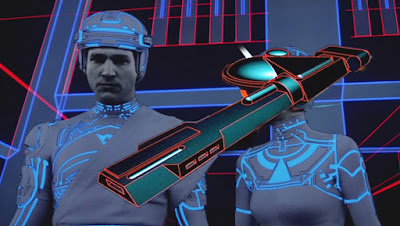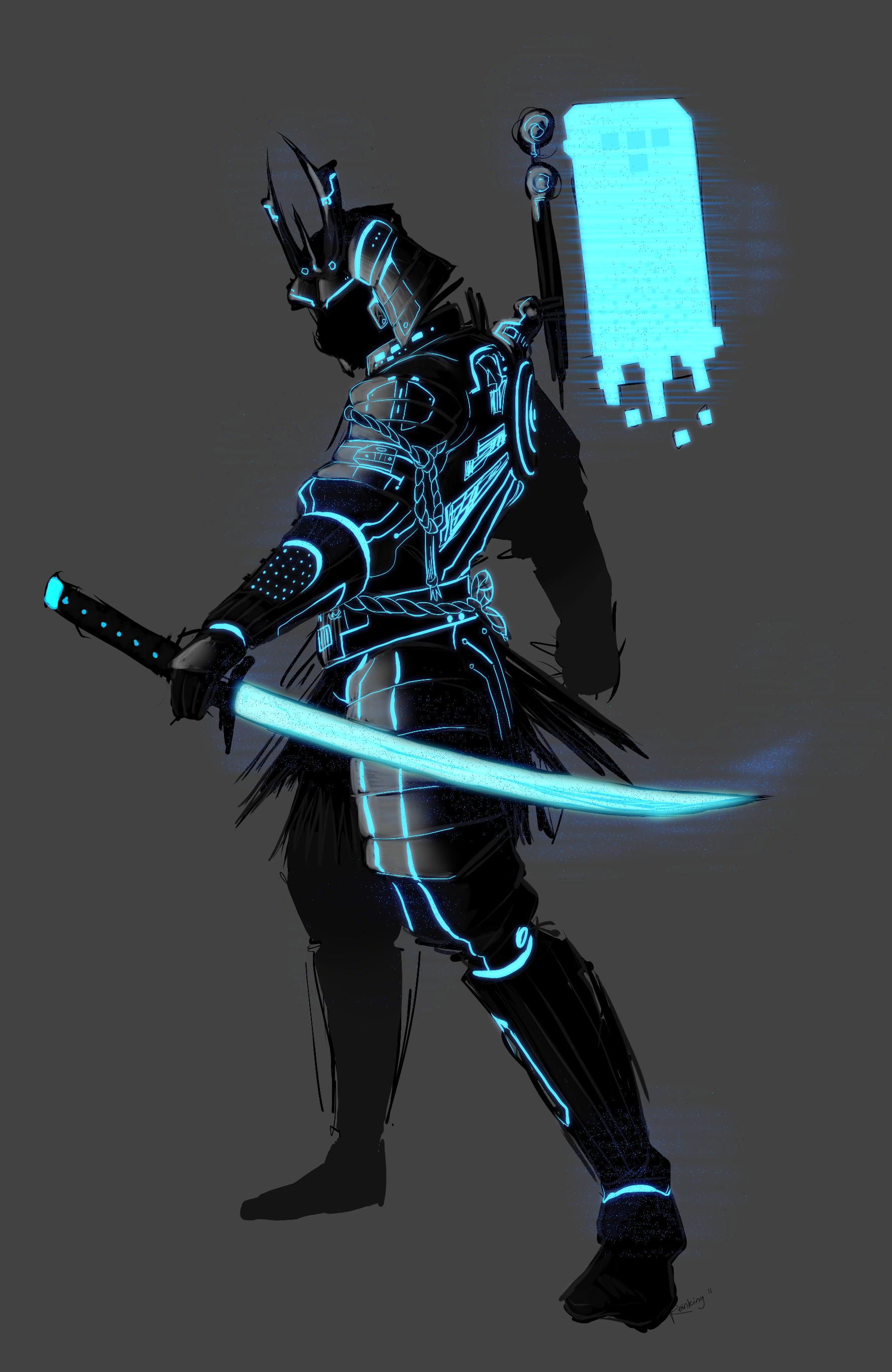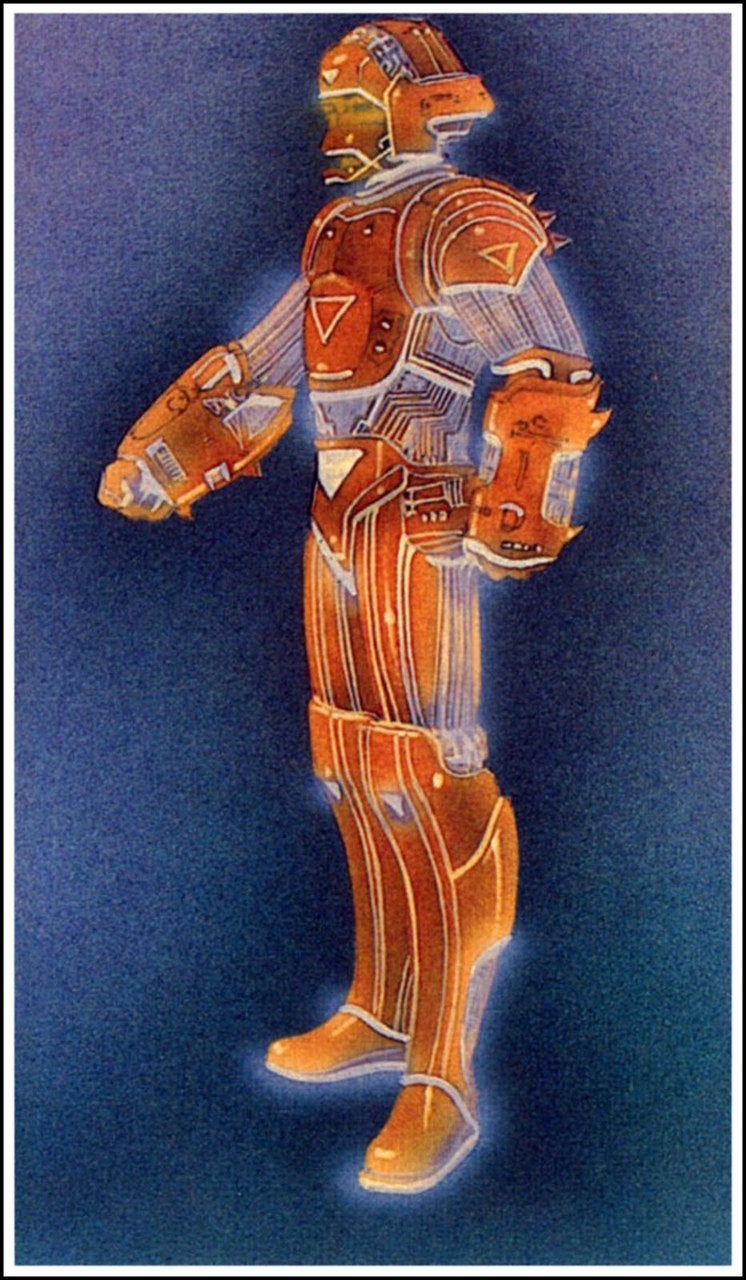my TRON headcanon
It's easy to forget that TRON was set in the future. Bridges' character Flynn had been a great video game programmer, but the tank game depicted is technically advanced far beyond the state of the art at the time. It was the year Q-Bert, Dig Dug, and Pole Position were released. TRON came out two years before William Gibson's Neuromancer. It's not about virtual reality at all. Instead its an imaginative take on what is happening within the computer itself. I asked myself what would have to be true about the kind of computer they were using for the actions in the movie to make any sense? What I've written here is a kind of outline of an imagined background in which the movie TRON takes place, with a little on the end about part of TRON: Legacy.
(all imagery is art found on the web.)
In 1962, building on the pioneering work of Claude Shannon, Dr. Walter Gibbs discovered a deep connection between information theory and the physics of spacetime manifolds. The theory predicted that large quantum informational structures (LQIS) could be cloned and represented isomorphically as patterns in an electromagnetic field on a metamaterial crystal substrate suspended at near absolute zero in a vacuum chamber. He discovered, quite by accident, that the waking human nervous system generated such a LQIS. These cloned mental states were capable of harnessing enormous computational resources inherent in the quantum crystal structure. Gibbs recognized that the cloned states could be considered a kind of immensely complicated software running on a computer that was essentially spacetime itself. He called the cloned states "programs," though in reality the process of programming them did not involve writing code in a programming language at all, but scanning the nervous system quickly with an infrared laser.
For the next decade, he tried various methods of interacting with these "programs." In 1972, combining microscopic lasers and a program he created called DUMONT, he was able to reliably input and output to any program within the crystal (which Gibbs called "grids" due to their periodic structure). One of his first demonstrations was a chess program based on his own states of mind while playing chess, and he founded a company called ENCOM to commercialize his products. Because of the difficulty in creating and maintaining grids, all ENCOM systems performed small, local computations on standard computers, but communicated remotely with the grids to perform more complex operations which could only be carried out by programs on the grids. (The grids interfaced with these distant computers through lasers like DUMONT.)
The programs existed in the grids in a quasi-spatial arrangement, though at a timescale much faster than reality. The lasers, however, were at fixed locations in the grid, so programs needing to interface with the outside world needed to be shuttled to the lasers and take turns communicating.
The programs existed in the grids in a quasi-spatial arrangement, though at a timescale much faster than reality. The lasers, however, were at fixed locations in the grid, so programs needing to interface with the outside world needed to be shuttled to the lasers and take turns communicating.
Gibbs seems to have never fully considered what the nature of these programs meant in terms of intellectual capacity. The chess program he had developed was capable of forming its own subgoals and strategic thinking, and began to accumulate resources on its own, increasing in computational capacity and changing in many ways from the original program state. Among the discoveries the chess program made was a way of eliminating other programs from the grid by forcing them to be stored at lower and lower resolutions recursively. Gibbs was unaware of much of this as it was not communicated through the lasers but kept secret.
Eventually an ENCOM employee, a programmer named Ed Dillinger, created a military program called SARK. SARK was capable of sending radio signals directly, bypassing DUMONT. The chess program recognized that SARK could be useful towards its goals of strategic takeover, and made contact with Dillenger through SARK. It proposed a plan to move against the current management and seize the most profitable programs, bringing Dillenger to power. In return, Dillenger would create programs that would allow the chess program to control all the programs on the grid. In the process the chess program became MCP, the Master Control Program.
However, being a game program gave the MCP an unusual take on the world. Defeat that wasn't conditioned on preset rules known by both parties in advance made it feel unsatisfied and (though it wouldn't have used the term) guilty. It was able to work around this feeling in an efficient way by putting the programs it wished to erase into games they were completely unqualified for where its agents (especially SARK) could defeat them easily.
However, being a game program gave the MCP an unusual take on the world. Defeat that wasn't conditioned on preset rules known by both parties in advance made it feel unsatisfied and (though it wouldn't have used the term) guilty. It was able to work around this feeling in an efficient way by putting the programs it wished to erase into games they were completely unqualified for where its agents (especially SARK) could defeat them easily.
Meanwhile. Gibbs had begun experimenting with extending the theory of LQIS using much more powerful lasers. (That he was more interested in this than exploring the ramifications of his already astonishing results gives some insight into Gibbs' character.) Any object with sufficient information density (essentially, parts of any living thing, such as leather, an orange, or a live creature) could not just be cloned, but treated as information directly and be transferred from the substrate of reality to that of the grid through a non-destructive scanning process he called "digitization" by analogy with scanning a book. He was inspired by the "it from bit" philosophy developed by John Wheeler. This is the point at which the movie TRON starts. Dillenger has seized control and taken over the game programs, but this is simply to build resources in the fastest, simplest way. The MCP's ultimate goals were much more wide-ranging and nefarious.
In the meantime, in other grids of the crystal, nearly disconnected from the ones being used by the programs, a kind of evolutionary algorithms were developing an entire digital ecology. Natural programs similar to computer viruses gave rise to more and more complex and intelligent entities. The quasispatial arrangement and physics imposed to make the cloned programs behave in natural ways led these to develop into a kind of digital animal life, eventually giving rise to what would be called ISOs. These ISOs would, much later, use human forms as a kind of spacesuit to travel to and interact with the very alien grids populated by cloned programs.
In the meantime, in other grids of the crystal, nearly disconnected from the ones being used by the programs, a kind of evolutionary algorithms were developing an entire digital ecology. Natural programs similar to computer viruses gave rise to more and more complex and intelligent entities. The quasispatial arrangement and physics imposed to make the cloned programs behave in natural ways led these to develop into a kind of digital animal life, eventually giving rise to what would be called ISOs. These ISOs would, much later, use human forms as a kind of spacesuit to travel to and interact with the very alien grids populated by cloned programs.












Comments